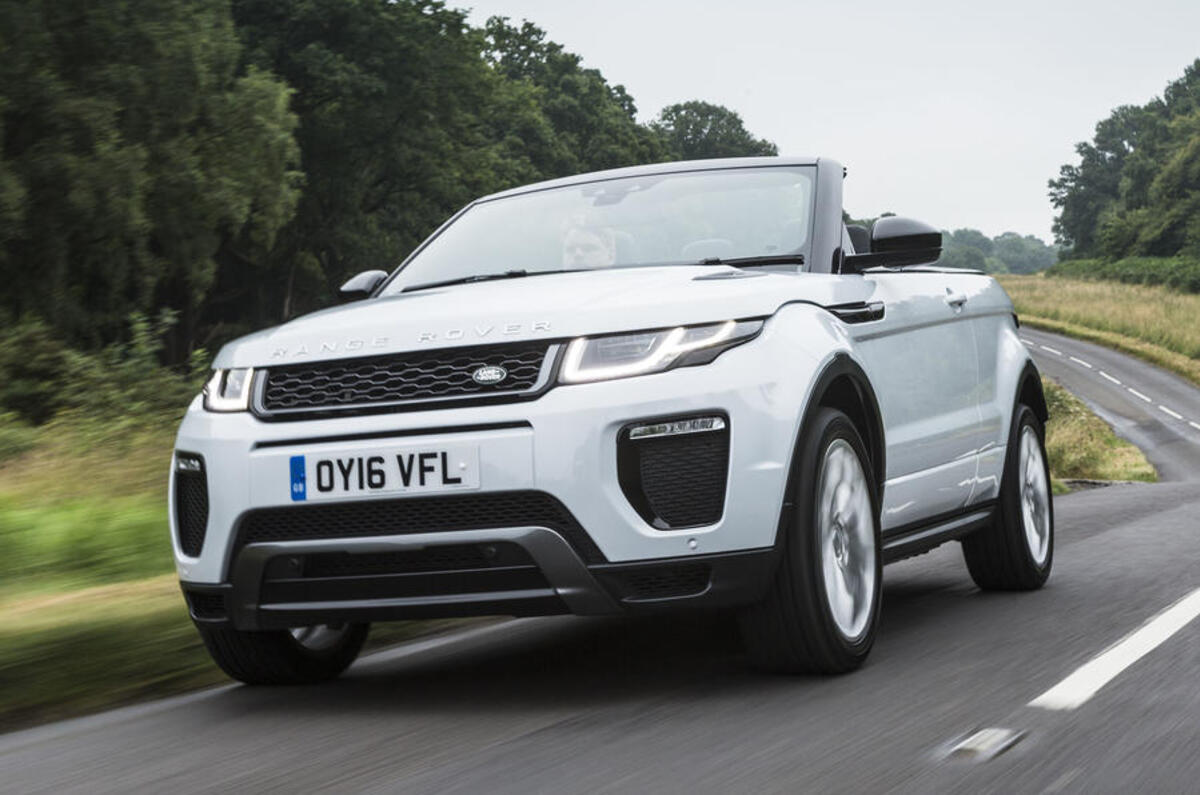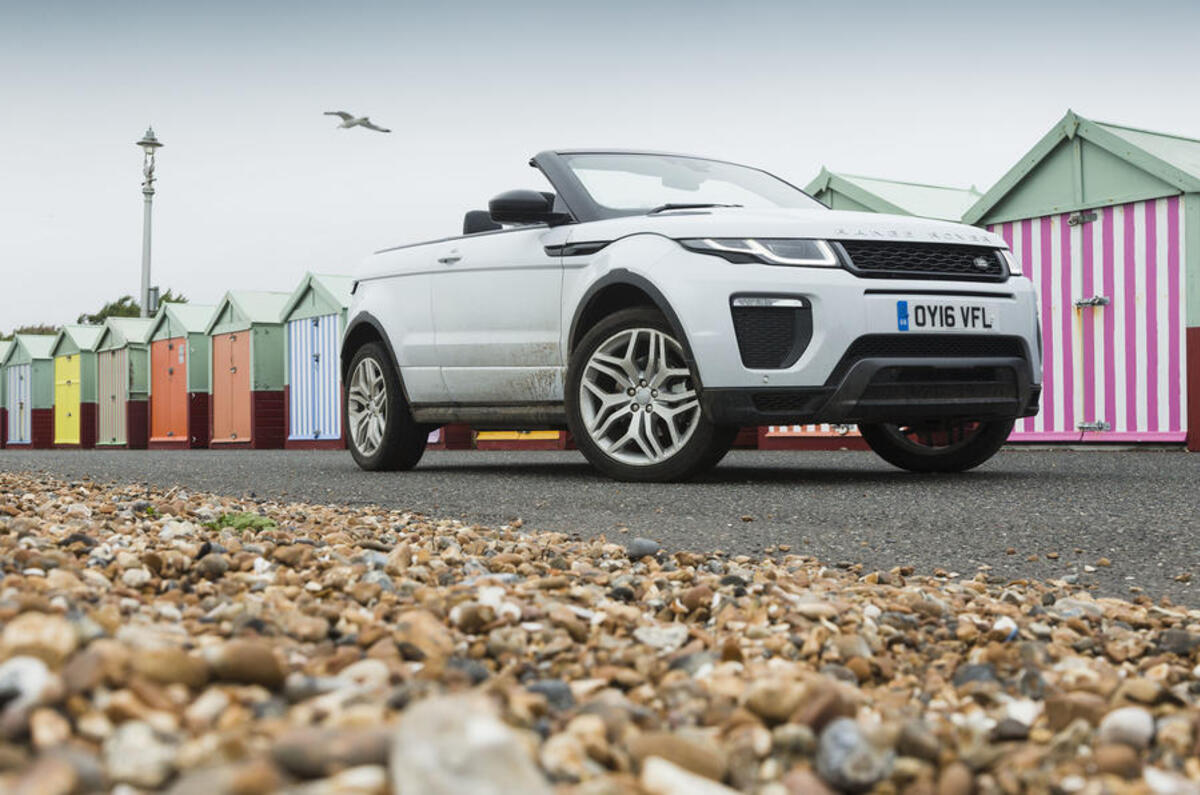The unconventional Evoque Convertible, has finally be given the once over on the UK roads. It's unorthodoxy is of course contained within its name: this is a three-door Evoque open to the sky, not to mention the slings and arrows of public opinion.
To Land Rover, the formula still makes unquestionable business sense. People like the Evoque; people (particularly Brits) like convertibles – et voilà . Achieving the end result has, unsurprisingly, required a fair degree of compromise and some considerable engineering.
The model is consequently heavier than the standard Evoque, and significantly more expensive, too. We're driving here the Convertible in its most affordable HSE Dynamic trim (with the 177bhp 2.0-litre diesel Ingenium engine), which costs from £47,500 – about the same money that would buy you a decently optioned Porsche Boxster.
A 237bhp, four-cylinder 2.0-litre petrol completes the engine line-up. As for trim levels there are two to choose from the entry-level HSE Dynamic trim as fitted to our test car. It equips the Evoque Convertible with parking sensors, xenon headlights, electrically adjustable front seats, leather upholstery, cruise control, lane departure warning, and Land Rover’s 10.2in infotainment system complete with Bluetooth, USB connectivity, sat nav and a rear view camera.
Upgrade to the range-topping HSE Dynamic Lux and you’ll find luxuries such as parking assist, towing assist, a 360-degree camera, keyless entry, traffic sign recognition and blind spot monitoring as standard.


































